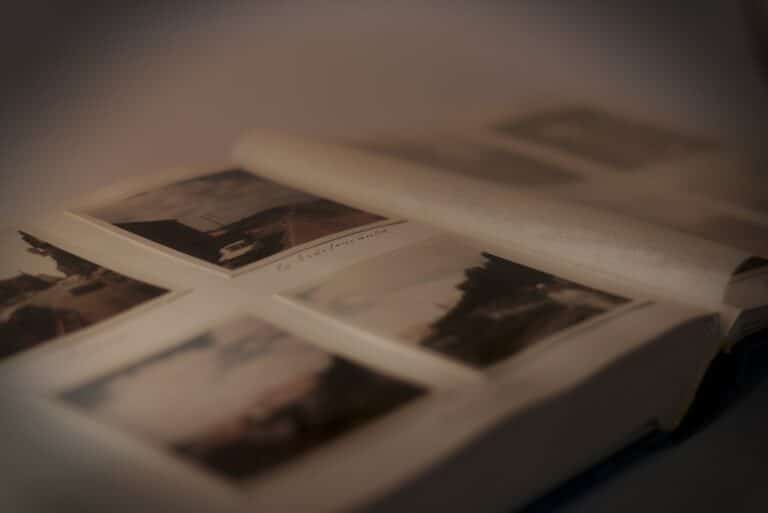For the family history scientist, finding a stash of old family images can be a real genealogy prize! And while our very first disposition may be to hang them right up on the wall for everybody to see– this may not be the very best concept. Photographs are delicate things, and old ones are particularly vulnerable to the results of the environment in which they are kept. Here are some steps you ought to take to maintain old photos so that they can be enjoyed for several years to come.
How to Preserve Old Family Photos
Carefully scan your old photos and negatives
Publish the scans to cloud storage
Print and frame copies you ‘d like to show
Shop the originals in a regulated environment
1. Scan your old photos and negatives and save them online

Old pictures are extremally delicate and are most likely to fade, chip or tear in time. Even if you keep them appropriately, the best way to preserve old photos for the future is to digitally scan and save them safely online.
Old pictures can be scanned individually or in their albums. It is specifically important not to remove pictures from albums if they have been there for a long period of time, or have actually been glued in location, as this may damage them.
Have a look at this short article about the best apps for scanning old photos, and you can find assistance for scanning old negatives here. The process is remarkably easy and numerous available apps likewise have storage available to simplify the process further. Or you can publish the digital copies to an existing cloud account– anywhere you understand you will maintain access to for a long period of time.
2. Shop old images in a regulated environment
Obviously, you’ll also wish to maintain the originals. Old photos require to be safeguarded in particular methods to keep them away from environmental risks that can harm them.
The National Archives has offered recommendations relating to how old photos and files ought to be kept. You don’t require to check off all of these ideas, something is better than absolutely nothing, however the more you can do to secure these household treasures the better.
The best way to save old images:
Store them in appropriate containers where they can lay flat. Pictures can be put in archival quality albums, enevelopes or sleeves to safeguard more them.
Never eliminate old images from albums if they have been there for a long period of time or are glued in place. This may harm them.
Store them at constant temperature levels below 75 degrees Fahrenheit. Cooler temperatures suggest much better long-term preservation.
Keep the humidity levels in picture storage areas in between 15% and 65% to avoid decay.
Prevent saving old photographs in attics, basements, or garages where temperature level and humidity tend to change. This can cause mold, chemical decay, or brittleness.
Keep your pictures away from areas that are vulnerable to insects and rodents. These “critters” like to utilize paper to nest and might chew holes in your treasured images
Store old photos up on shelves and far from locations that are vulnerable to leaks to avoid water damage.
The right materials for maintaining and storing your old photos.
When you have actually copied your old pictures and selected a location to store your originals, don’t simply shove them in a cardboard box or that photo album you purchased the dollar store. Specific chemicals and plastics can trigger your old photographs to decay or stick.
Here are some rules you should follow when saving your photos in albums or boxes:
Usage archival quality paper or cardboard to save your images. You can also utilize stable plastic image pockets or sleeves, such as products made of polyester, polyethylene, or polypropylene.
If keeping your old photos in a box, make sure the box is big enough that your pictures can be saved flat or upright with no creasing or bending. If storing your photos upright, use spacer boards to keep your photos from bending.
When placing your old household pictures in a photo album, do not use tape or glue to keep them in place as this can lead to staining and paper damage. Avoid magnetic picture pages. Mount your photos on acid-free paper album pages utilizing acid-free or stable plastic installing corners or place your images in stable plastic photo album pages.
3. Display them effectively to prevent fading
Because photos are delicate to light and may fade or tarnish if exposed for long periods, it’s also important to make copies of them if you prepare to display old family images in your home. The older the photograph, the more vulnerable the image becomes. When you have scanned your images you can easily purchase prints from a variety of sites, or take them to a regional picture printer, to create ones you can frame and display.
The photos below are copies, showed in the corridor of my home.
how to protect old household pictures, scanning old images, framed pictures
If you are not sure of how to copy your old pictures, or if the photos you wish to copy are extremely fragile, you might want to seek out a picture restoration professional to do this for you. It is particularly a good idea to take your old photos to a professional for restoration if they have actually remained in antique frames for many years.
If you just should display an original photo, or your old photograph is thoroughly protected in an antique frame and you do not want to tinker it, be picky about where you hang that old picture
Select an area in your home that is not straight exposed to sunlight, fluorescent light, or UV light. Ensure the area is not at threat for leakages or direct exposure to pests and rodents. Make sure the place is temperature and humidity controlled. A dark corner of a primary floor den or hallway frequently provides a great location to show an old photograph.
This portrait of my grandmother and her more youthful brother (below) was taken about 1908. It is installed in one of those old oval antique frames and I don’t wish to touch it! I have it displayed in a darker corner of my den, far from the window.
Preserving old household images, old picture storage and repair, antique family image.
If you follow these recommendations, you should have the ability to maintain your old household photos for many years. Here’s hoping you find that photo “jackpot” to assist your genealogy research study!

Leave a Reply